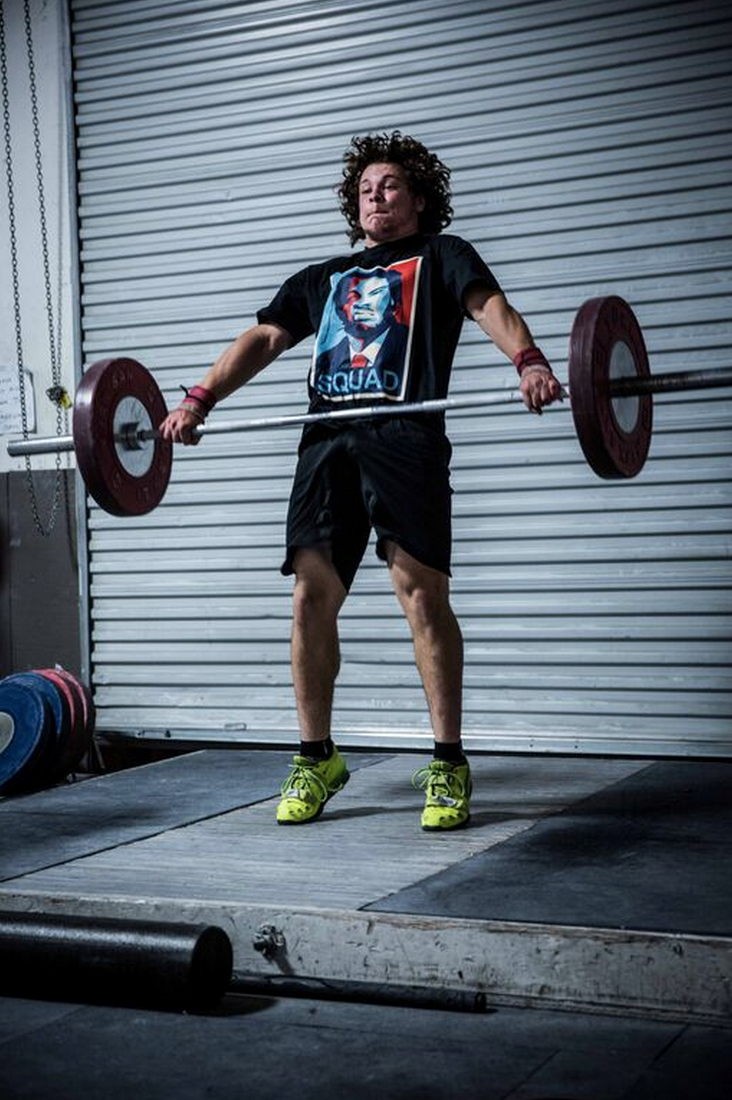Heavy Weights: Let your speed be the variable
In this article we want to discuss a concept that may seem obvious at first glance and yet it is an area where mistakes are made frequently. The issue we want to address is how an athlete should attack progressively loading heavier weights on a bar in the Snatch and Clean in a given workout. As an athlete loads heavier weight on a barbell, the bar cannot continue to be accelerated using the same force or achieve the same peak velocity. For example, Spencer Moorman cannot pull 160kg with the same speed as he can pull 100kg. Therefore we must have an approach and a strategy to counter this slower bar speed as he makes progressively heavier attempts.
The default method we see many athletes use to overcome the increased weight is to pull the bar harder or with more aggression. This strategy results in over-pulling to counter the heavier, slower moving bar. Usually the athlete winds up engaging the arms, which ultimately causes the athlete to stay on the pull too long. This developing tension in the arms also makes it more challenging to accelerate an already slower moving bar and disrupts the timing the athlete’s transition into the catch. Instead of pulling harder, athletes must learn to keep the mechanics of the pull consistent throughout the workout and place the focus primarily on increasing the speed of his or her own body in the transition under the bar.
Simply put, the overriding goal as the weights get progressively heavier should be for the lifter to intentionally and gradually move his or her body faster. The more weight the athlete loads on the bar throughout the workout, the more the focus needs to be on an explosive finish and a faster transition under the bar. Thus, athletes that start their workout by moving as fast as possible at light weights tend to be at a disadvantage. This is because they no longer have their speed as a variable. We constantly see athletes moving at lightning fast speed to get under 40-50kg. Then as the weights get heavier they aren’t capable of moving any faster to counter the slowing barbell. Subsequently, the athlete tends to start altering their pulling mechanics by trying to pull the bar higher or harder. As the athlete tries to pull harder, the upper body becomes tense stifling the lifters ability to change direction under the bar. Over pulling also tends to alter the path of the bar and causes athletes to miss Snatches in front or behind; or incorrectly time the bounce on the Clean.
From a practical standpoint, use the lighter weight to set your movement patterns. Work at speeds that are as slow as possible to execute the movement. A good strategy is to try and use only the amount of energy necessary to lift the weight on the bar. Always focus your attention on the movement of your body and execute the skill at a tempo that maximizes your ability to feel the movement. This helps ingrain quality motor patterns and sets the timing necessary for completing heavier lifts. It is also beneficial as the load increases to only think about a few simple cues. We encourage our athletes to think about bracing their spine and pushing through their ankles, while keeping their arms relaxed and passive. Finally, take your time as you warm up. Instead of taking 2 or 3 attempts at your lightest weight; try taking six, seven, even eight to set your timing. Again, execute the movement as methodically and as relaxed as possible.
If you do this correctly, you should accelerate the lightest weights and heaviest weight at similar rates. Keep the focus on your body and your movement and gradually increase the explosiveness of your finish and your speed under the bar as you load more weight.




